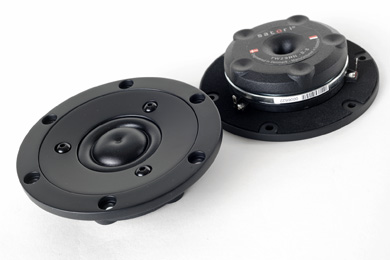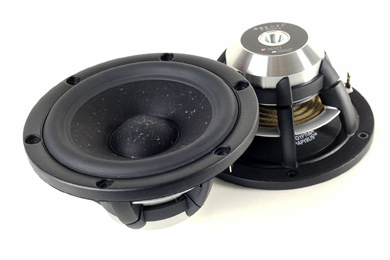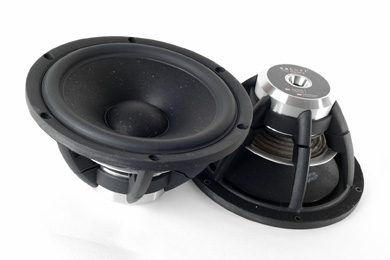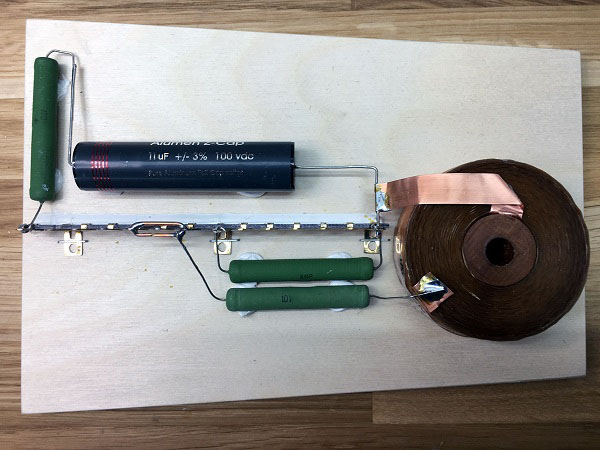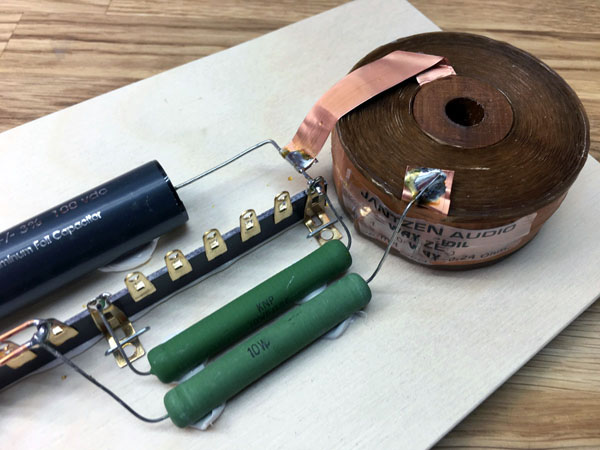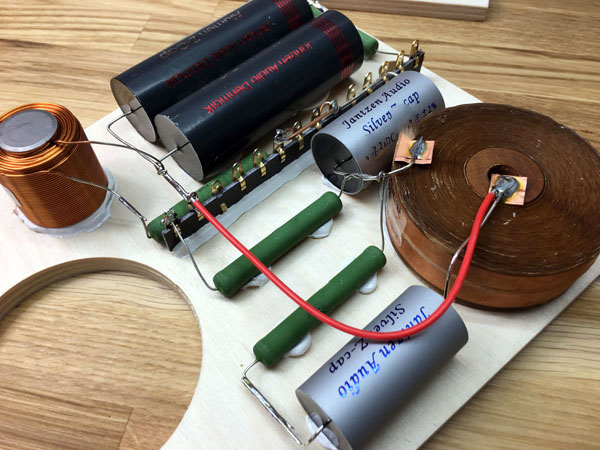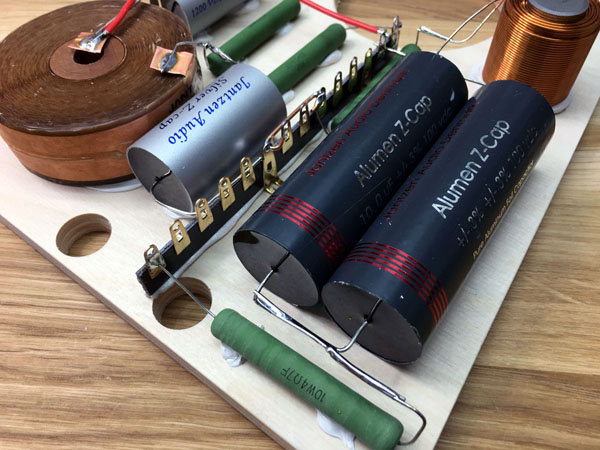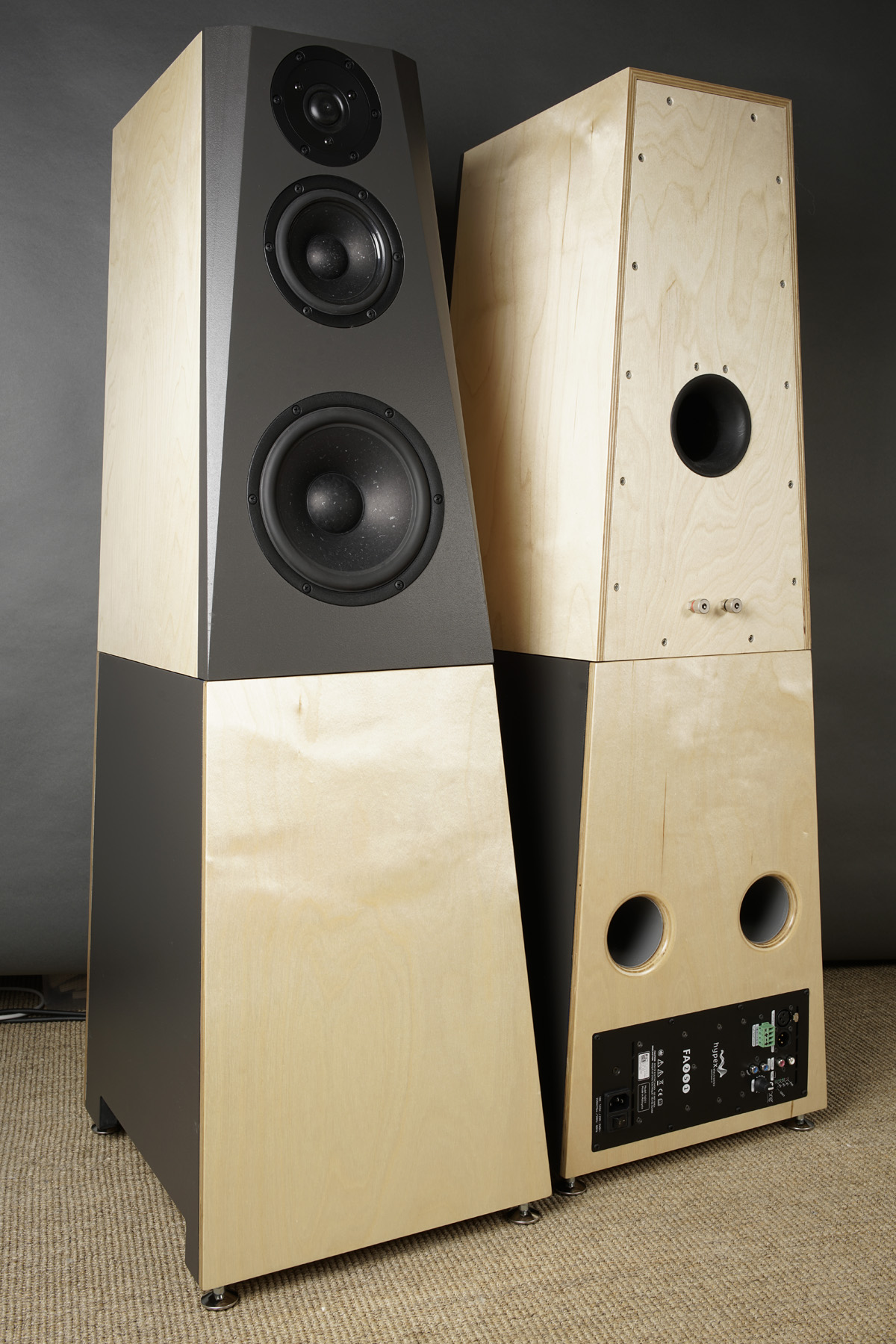DIY Loudspeakers: HOME INDEX UPDATES RESPONSE WHAT'S NEW
SBAcoustics SBA-741
Copyright 2019 © Troels Gravesen
Go to on this page:
DRIVERS
CROSSOVER
CABINET
MEASUREMENTS
SPEAKER-KIT
CROSSOVER LAYOUT
The speaker here has been a long time in the making. Test cabinets were
made to make the best acoustic environment for the drivers giving as
smooth response as possible, and more than ten crossovers have been
wired up for testing before the final one was picked for publication.
Looking below you find a crossover fairly simple featuring a mix of 2nd
and 1st order topology. Having a huge overlap between drivers calls for
units that blend well to produce a homogenous sound. The significant part of the treble here is
produced as much by the midrange driver as the tweeter, recalling the
treble range being
1260-10200 Hz.
The bass driver - like in any system - defines the obtainable system
sensitivity. I here picked the 8 Ohm version of the MW19P driver making
it a suitable speaker for even modest powered tube amps, although I
won't recommend 4-8 watts SET amps unless you never play very loud. The 4 Ohm MW19P would play louder for the same volume
setting, but only because it draws more current from your
amplifier, not because it is more efficient. The 8 Ohm version
here runs smoothly from my 30 watt tube amp (EAR-861), so it don't
consider it a tough
load.
The virtue of this kind of speaker is obviously the small midrange driver, something that was taken for granted in many of the 70'ies speakers. Why? Because it's a natural link between a 6-7" mid-bass and the tweeter as discussed in the intro to my Illuminator-5 speaker. Please go to page for further reading. On paper, dispersion measurements of upper-mid/lower-treble may look the same from a 6+1 compared to a 6+4+1, but it just does not sound the same, hence top brand names like Gryphon, Wilson Audio, Vandersteen and others use a small 4" midrange driver to bridge the gap between a more dedicated midrange driver and tweeter in their top speakers. The reason for so many 6+1 speakers is cost. For a manufacturer of speakers, adding an extra driver and expanding the crossover is a no-go. Too expensive. For DIY'ers, not so much, as we don't have to ensure a viable profit of our creations.
Having the 19MW driver fully run in I find the speaker delivering a
surprisingly deep bass for the size, giving a forceful presentation of
lower octaves. The 1st order low-pass filter of the midrange and tweeter
high-pass section pays off in overall fidelity of musical instruments
and vocals. Generally these SBA drivers can deliver the level of detail
and transparency we have come to expect for state of the art drivers.
Our only challenge is to make the best possible crossover - and make
sure the crossover parts do not distort the signal fed the drivers.
Give the speakers stands that place your listening height somewhere
between tweeter and midrange and you get the flattest frequency
response.
Should you want to turn this modest sized speaker into a truly
full-range, add the
bass module and you've got something! With the edge-coated midrange
driver this seems to one of my keepers. I run it with my high-pass
filter before the EAR-861 power amplifier and program C for the Hypex.
Check out
bass module file for further info.
When I have the SBA-741 + bass module I forget about not having the
Ellipticor-3s in place, my reference speakers.
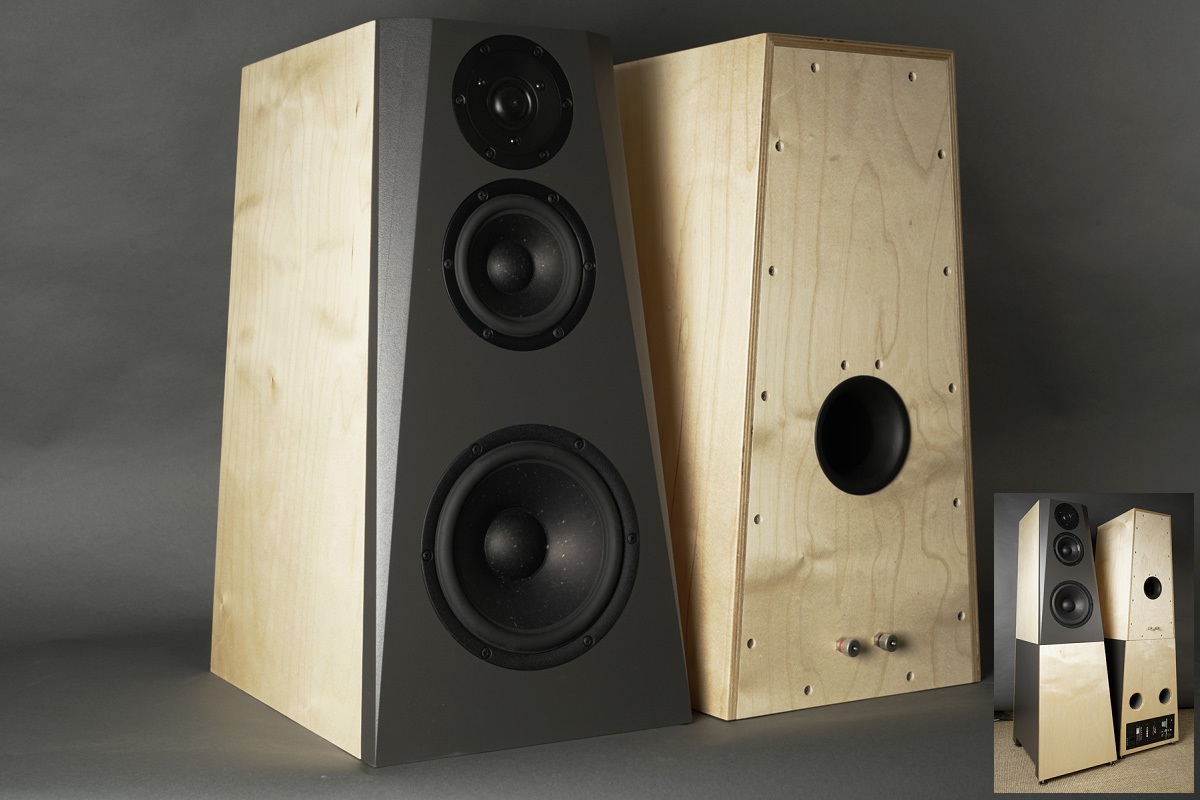
Basics:
3-way stand-mount speaker.
Dimensions: 27 x 36 x 55 cm, WxDxH.
System sensitivity: 86-87 dB/2.8V/1 meter.
Impedance: 4-8 Ohms, minimum 3.6 Ohms at 125 Hz.
Point of crossover: 600 and ~4000 Hz.
Power requirement: 20+ watts/channel.
Power handling: 70 watts. Please
also read:
http://www.troelsgravesen.dk/power-handling.htm,
and remember any burned driver is a misused driver.
Useful links (Please
follow all links before e-mailing!):
http://www.troelsgravesen.dk/tips.htm
http://www.troelsgravesen.dk/tips.htm#CONSTRUCTION_OF_CROSSOVERS
http://www.troelsgravesen.dk/crossovers.htm
http://www.troelsgravesen.dk/LCR-RC.htm
http://www.troelsgravesen.dk/Inverted-Polarity.htm
http://www.troelsgravesen.dk/choices.htm
http://www.troelsgravesen.dk/power-handling.htm
Download specs: TW29RN-B-4 MR13P-8 MW19P-8
For an even smoother midrange you can have your MR13P drivers edge
coated for 100 EUR + shipping back.
Read here: http://www.troelsgravesen.dk/W12CY003.htm
Contact me at
troels.gravesen@hotmail.com
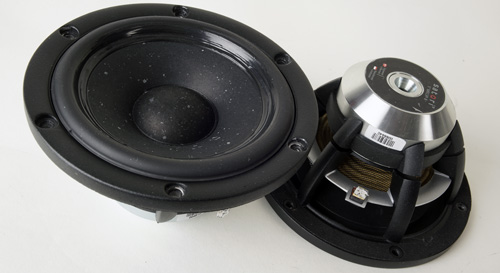
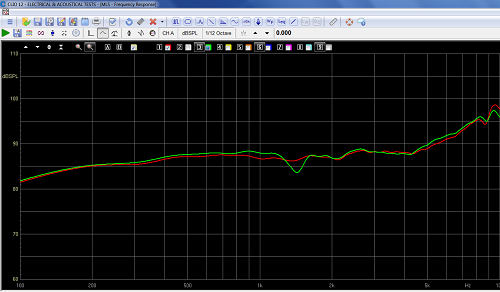
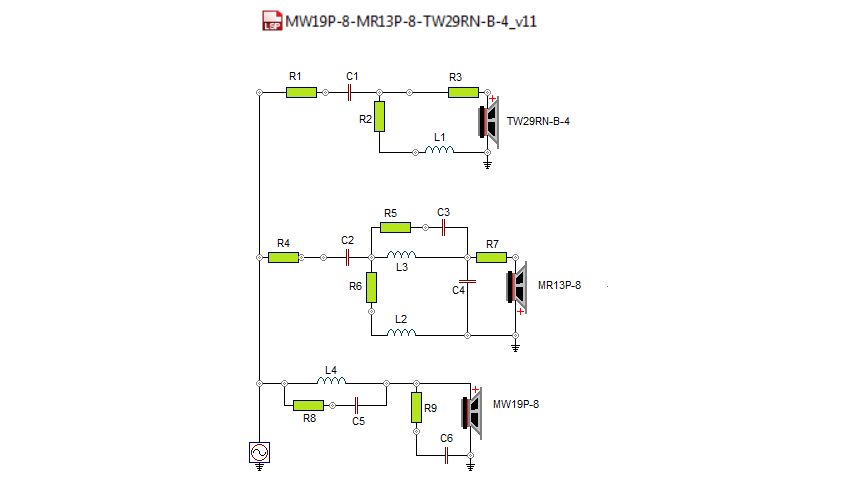
The crossover features a mix of LR2 for bass-mid and and 1st order for mid low-pass and tweeter high-pass, hence reverse polarity to midrange for proper summation. Using 1st order filters requires drivers that work well above and below points of crossover and the only driver here that takes special precaution is the MW19P-8 requiring some equalisation above 3.5 kHz, hence R8+C5 to smooth the roll-off profile. It all works very well. Basically I used some of the topology from the SBA-941 speaker.
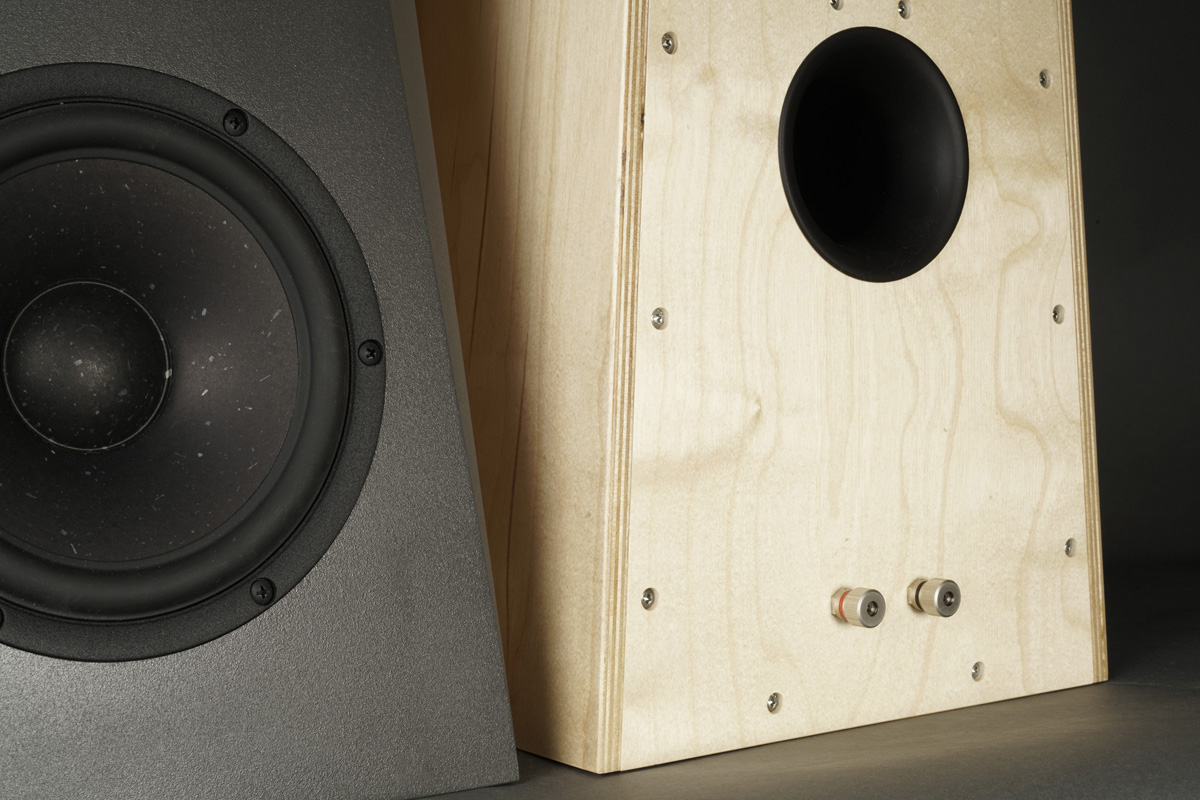
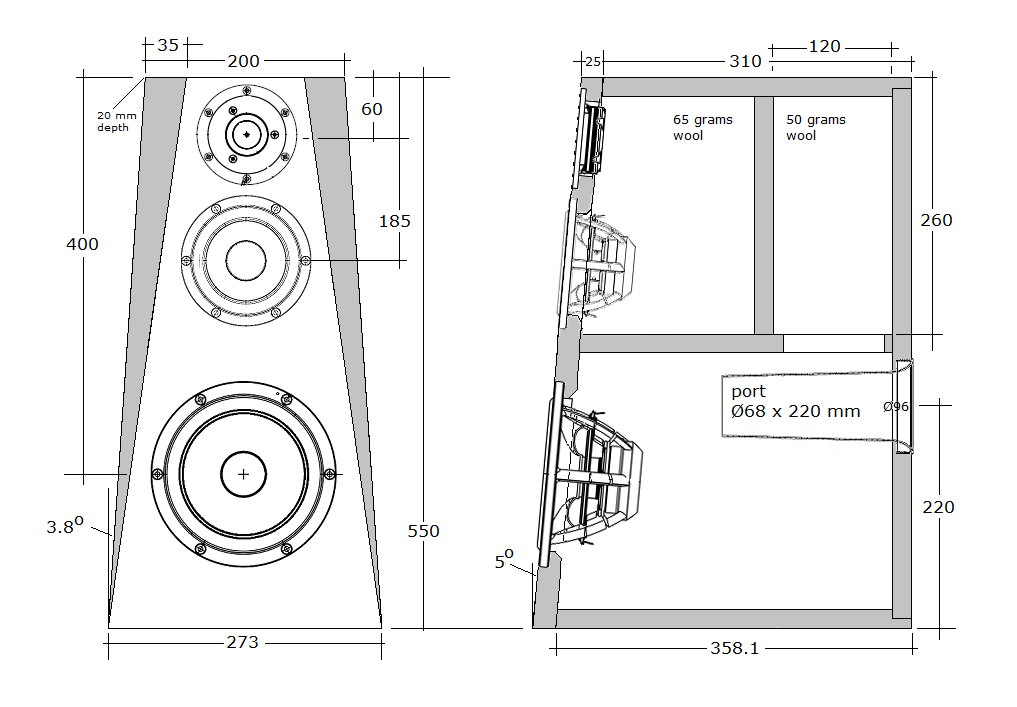
Cabinets are made from 20 mm Baltic birch and front panel from 25 mm
HDF. Follow images below.
Internal panels are added 4 mm bitumen pads and 8 mm felt.
Midrange cabinet is filled with 65 grams wool.
The cavity behind the midrange driver is filled with 50 grams wool.
A piece of 50 x 50 cm acoustilux is placed at bass cabinet bottom and up
the sides. See image below.
As always: Any change to front panel dimensions or drivers' placement and you need a new crossover - and I can't help.
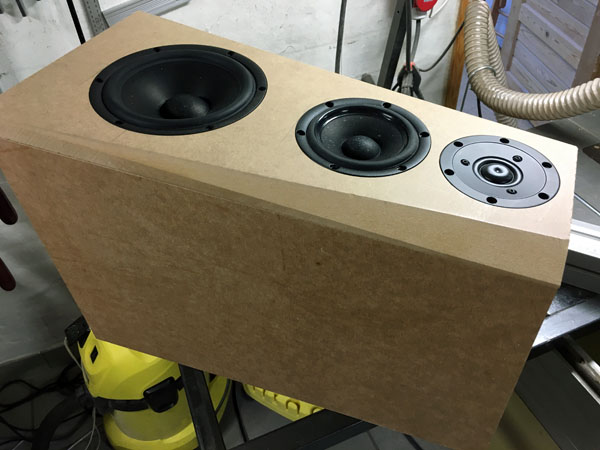
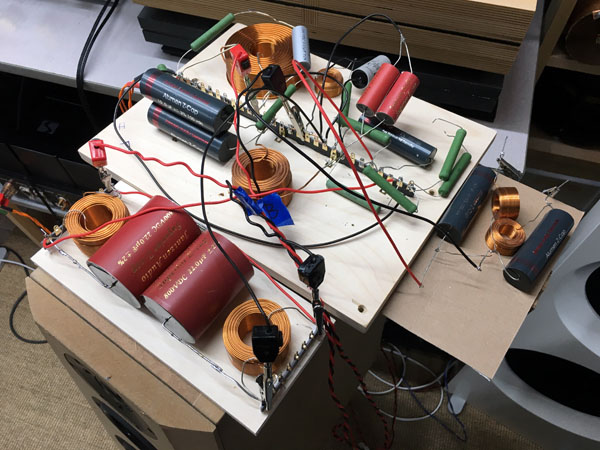
Any new construction starts with a MDF mockup to optimise design and try
out preliminary crossovers to see if this has any future at all.
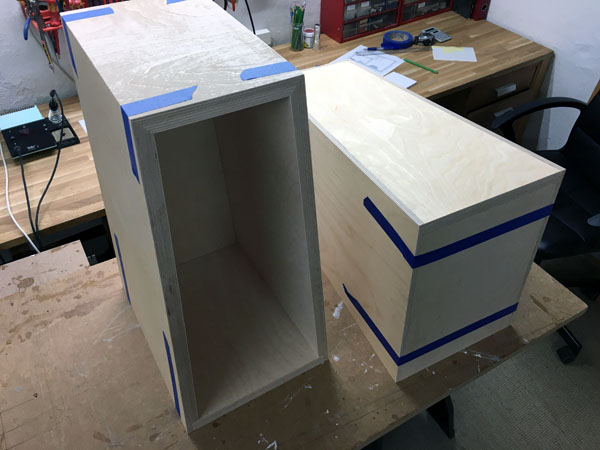
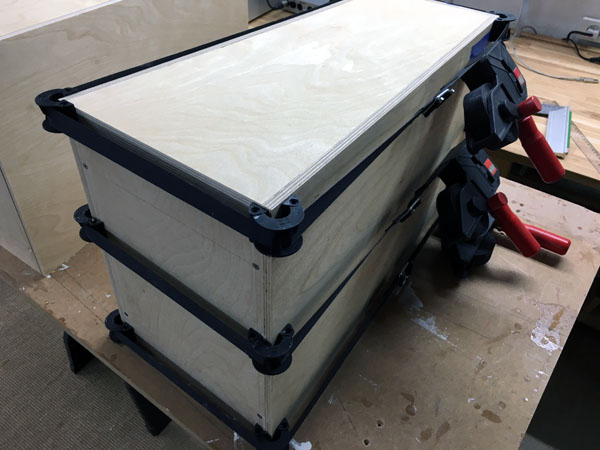
Making the final cabinets from 20 mm Baltic birch.
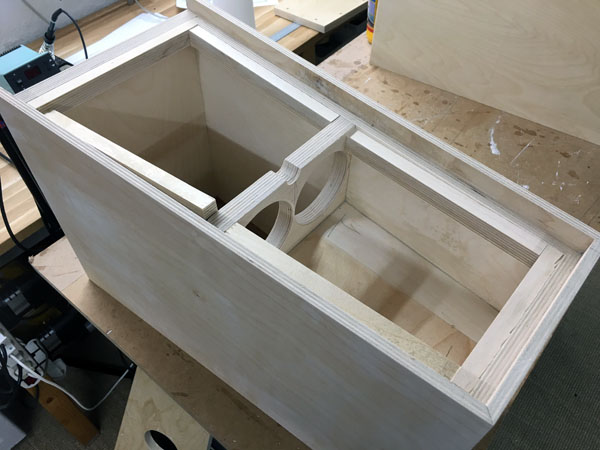
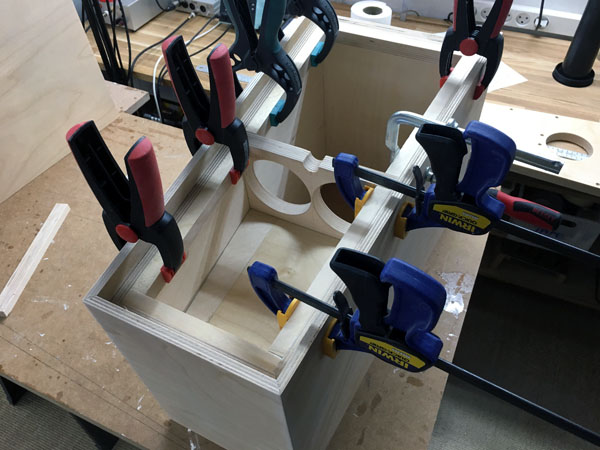
Adding 15 mm fillets to fasten rear panel. I suggest 10 mm fillets
giving a little more room for the crossover mounted on rear panel.
I strongly suggest making the rear panel detachable as we need access to
the crossover for tweaking.
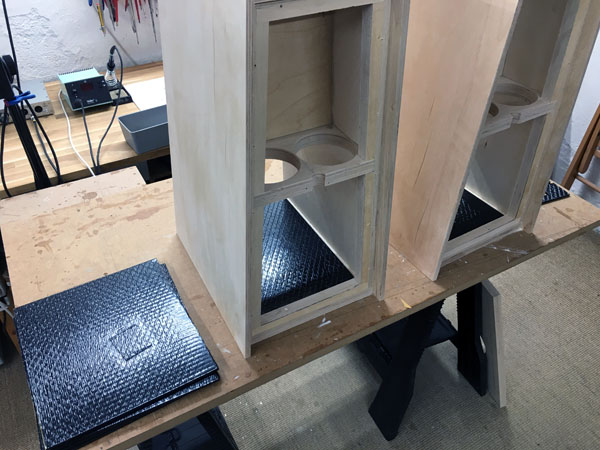
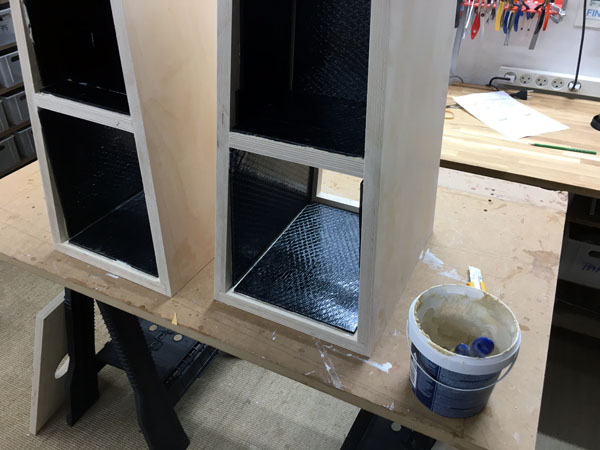
Adding bitumen pads to internal panels. Go to
Tips.
The bitumen pads are optional and
must be added to your order.
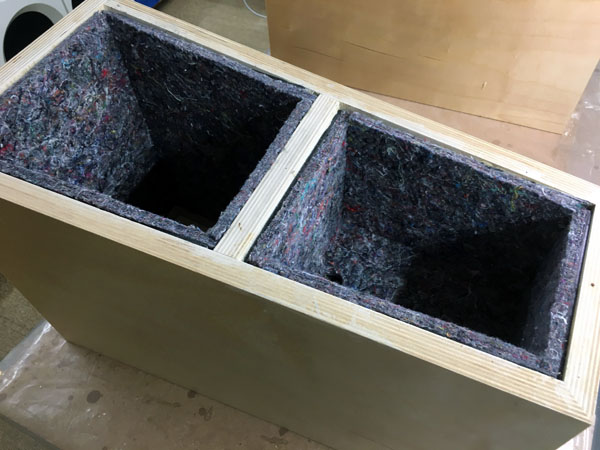
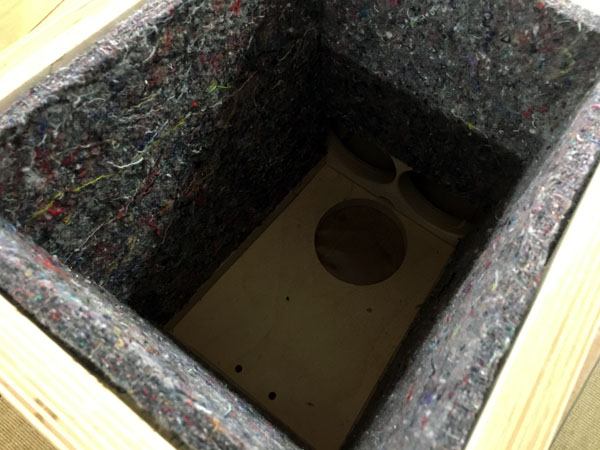
Adding felt to all internal panels except cavity behind mid/tweeter
drivers and rear panel.
Add 65 grams wool to mid-tweeter cavity and 50 grams for cavity behind
mid-tweeter.
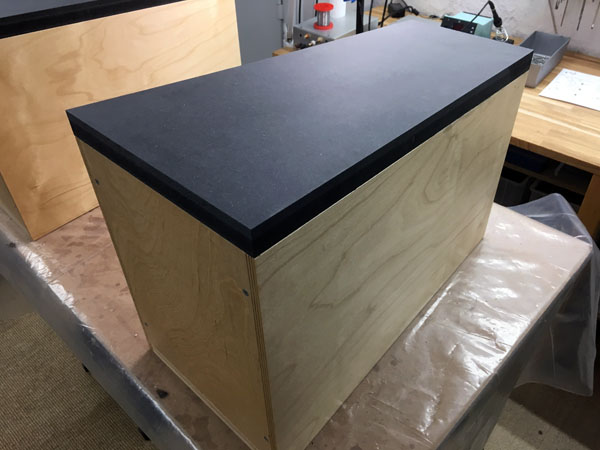
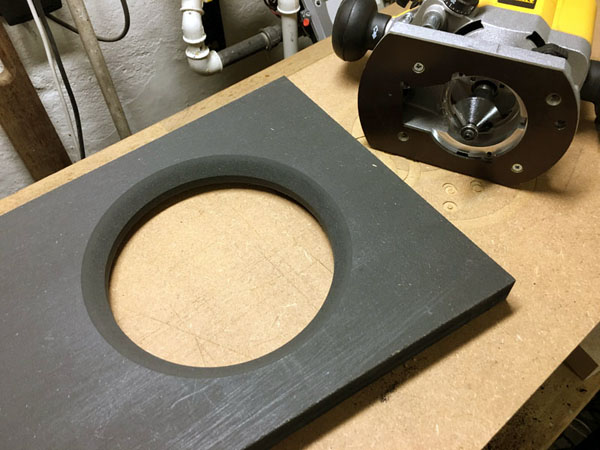
Trimming front panels and chamfering bass driver hole some 15 mm depth.
My front panels made from 20+8 mm HDF laminate.
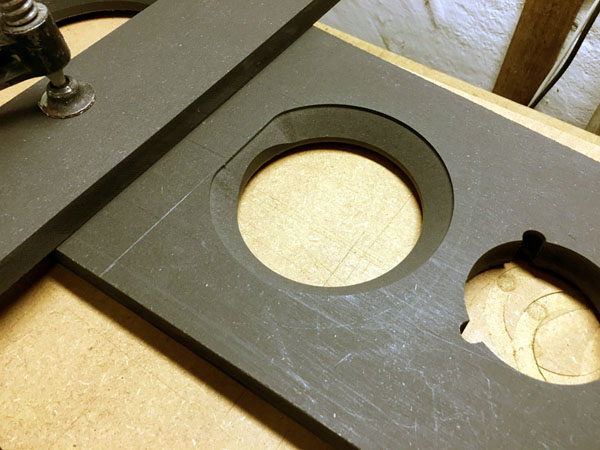
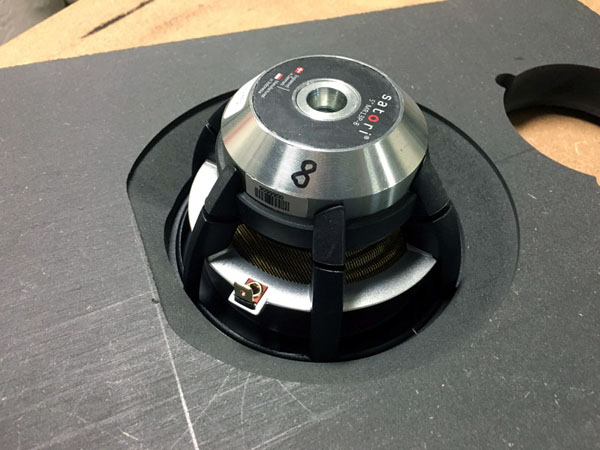
Make sure chamfering mid driver hole, some 15-17 mm.
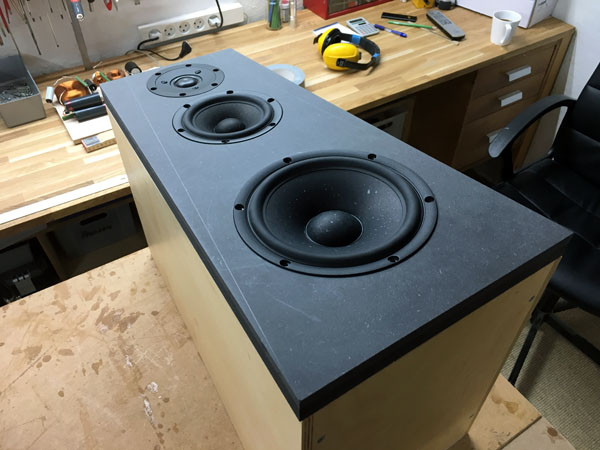
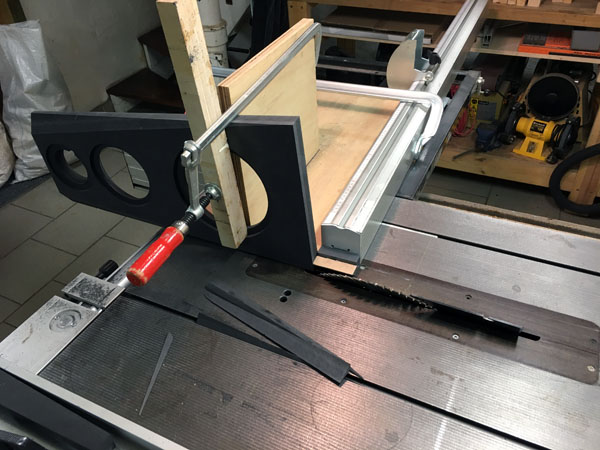
Testing all driver rebates and chamfering front panels.
Table saw at 30º and side table guide set to 2º. Same as
Ellipticor-3.
Chamfering can be done by hand, check here:
http://www.troelsgravesen.dk/tips.htm#Faceting
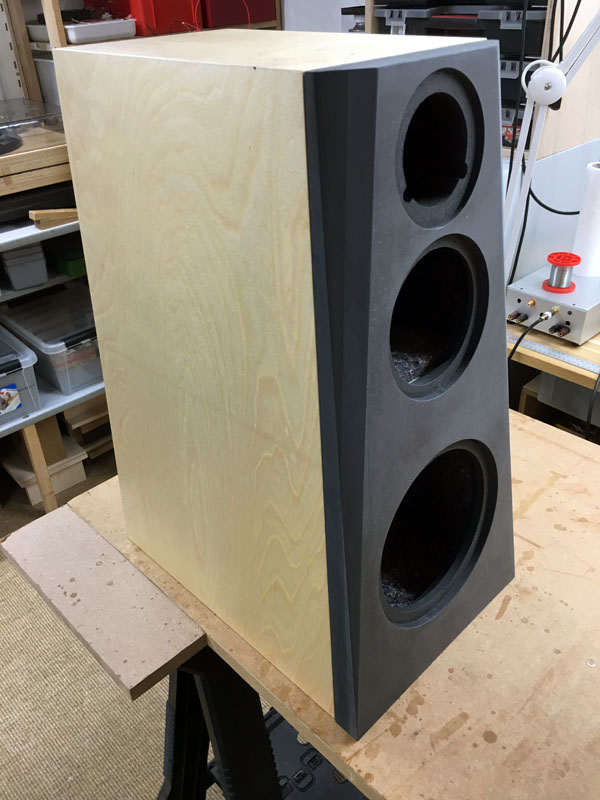
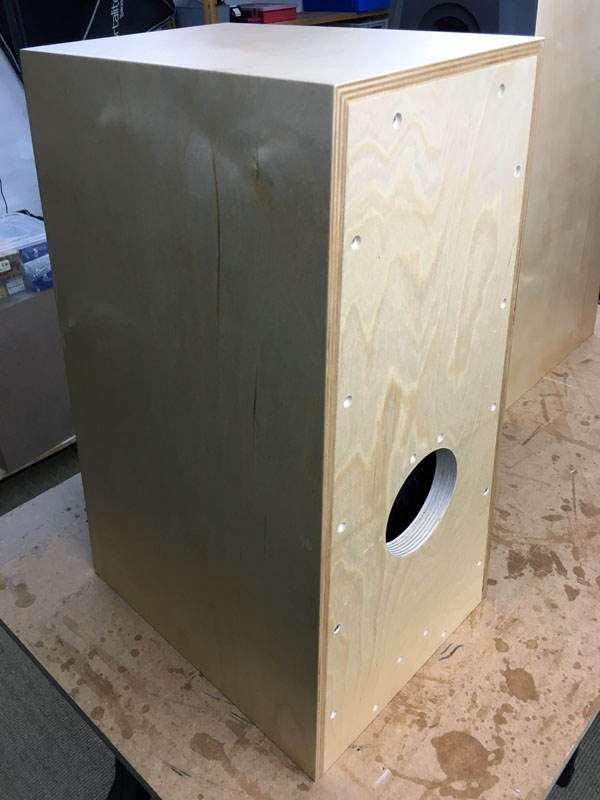
Front panels ready for sanding.
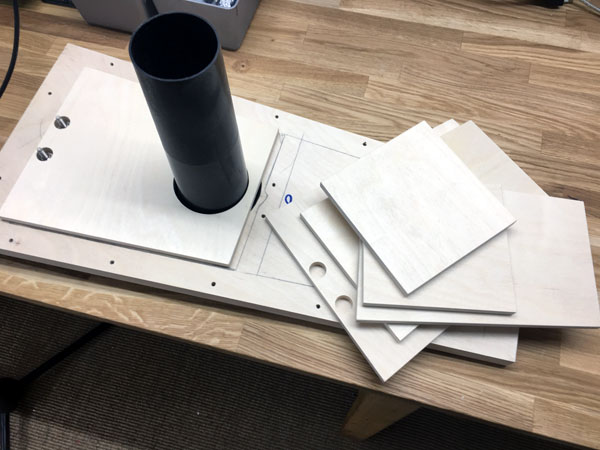
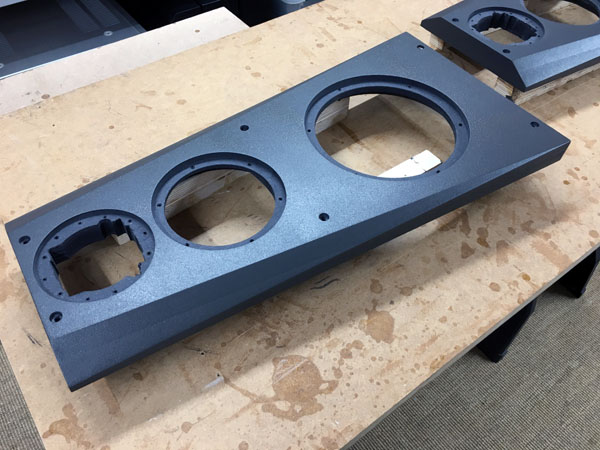
Preparing boards for crossovers and front panel paint.
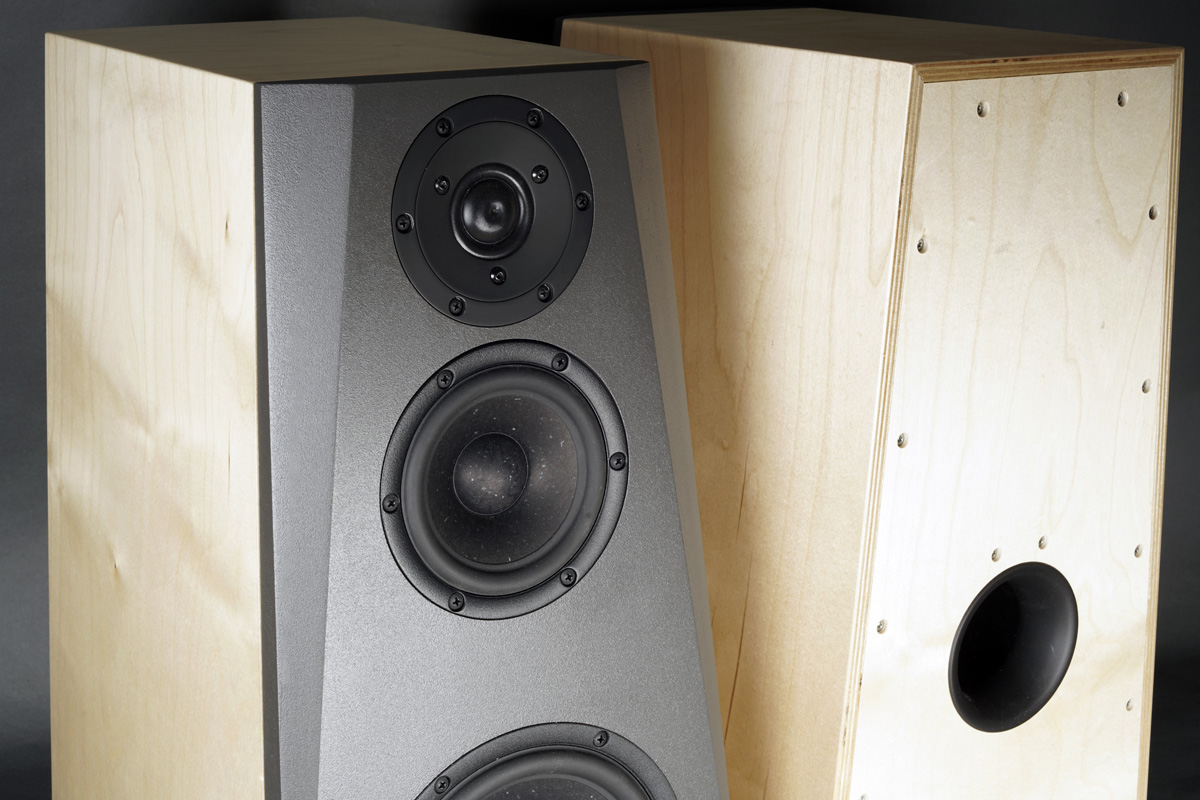
A few comments on
MEASUREMENTS before you start interpreting the readings below.
First of all, if we think measurements will
tell us how a speaker sounds, we're wrong. The perception of sound is
way too subjective to be reflected in any measurements we can perform. A
loudspeaker system is meant to give us a satisfying idea of an acoustic
event and for some people a pair of 5 USD ear-plugs are enough, others
spend 200 kUSD on a truly full-range pair of speakers - and the latter
may not be happier than the former.
Measurements may give us an idea of tonal balance of a system, i.e. too
much or too little energy in certain areas, although dispersion
characteristics play a vital role here. A two-way 7+1 and a three-way
7+4+1 may display similar horizontal dispersion, yet sound very
different. Measurements may tell us about bass extension if far-field
measurements are merged with near-field measurements. In addition to
this, ports may contribute to bass extension. Most of we diy'ers do not
have access to an anechoic room for full-range measurements from
20-20000 Hz.
What cannot be seen is what kind of bass performance we get in a given
room. Bass performance is highly dependent on in-room placement of your
speaker and the same speaker can be boomy in one place and lean in
another. Actual SPL level at 1 meter distance and 2.8V input is useful
for en estimate of system sensitivity and combined with the impedance
profile may give an idea of how powerful an amplifier is needed to drive
the speaker to adequate levels.
What measurements do not tell is the very sound of the speaker unless
displaying serious linear distortion. The level of transparency, the
ability to resolve micro-details, the "speed" of the bass, etc., cannot
be derived from these data. Distortion measurements rarely tell much
unless seriously bad, and most modern drivers display low distortion
within their specified operating range.
Many people put way too much into these graphs and my comments here are
only meant as warning against over-interpretation. There are more to
good sound than what can be extracted from a few graphs. Every graph
needs interpretation in terms of what it means sonically and how it
impacts our choice of mating drivers, cabinet and crossover design.
What measurements certainly do not tell is the sonic signature of the
speaker, because speaker cones made from polypropylene, aluminum,
Kevlar, paper, glass fiber, carbon fiber, magnesium, ceramics or even
diamonds all have their way of adding spices to the stew. Nor do
measurements tell what impact the quality of the crossover components
add to the sound, from state of the art components to the cheapest of
coils and caps, they all measure the same if values are correct, yet
sound very different.
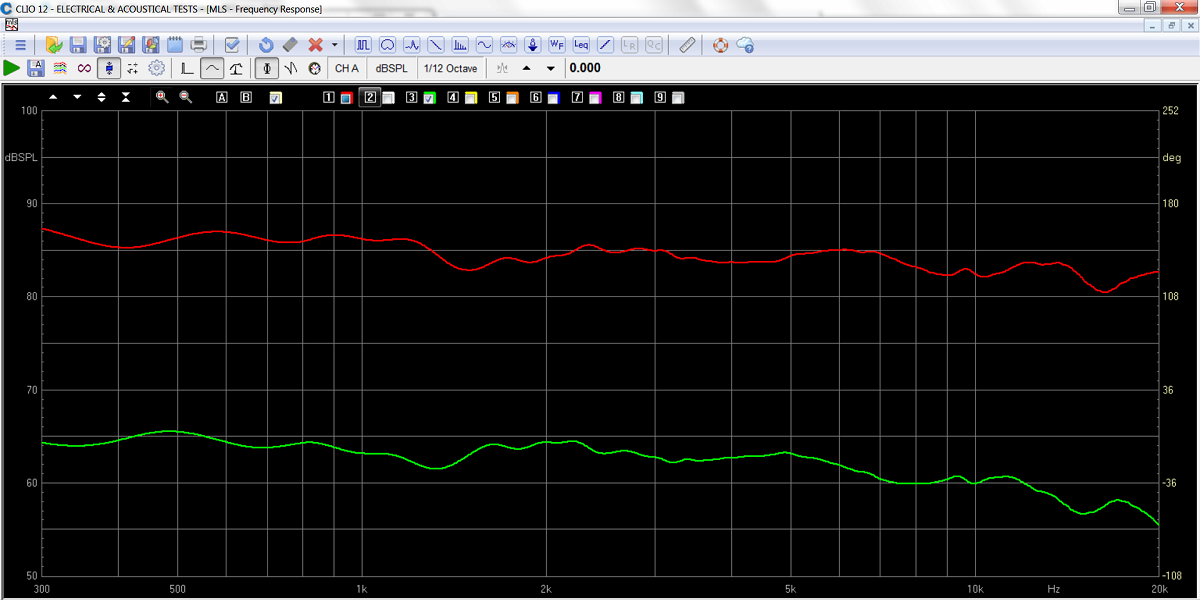
SPL normalised for 2.8V/1 meter. Green = minimum phase.
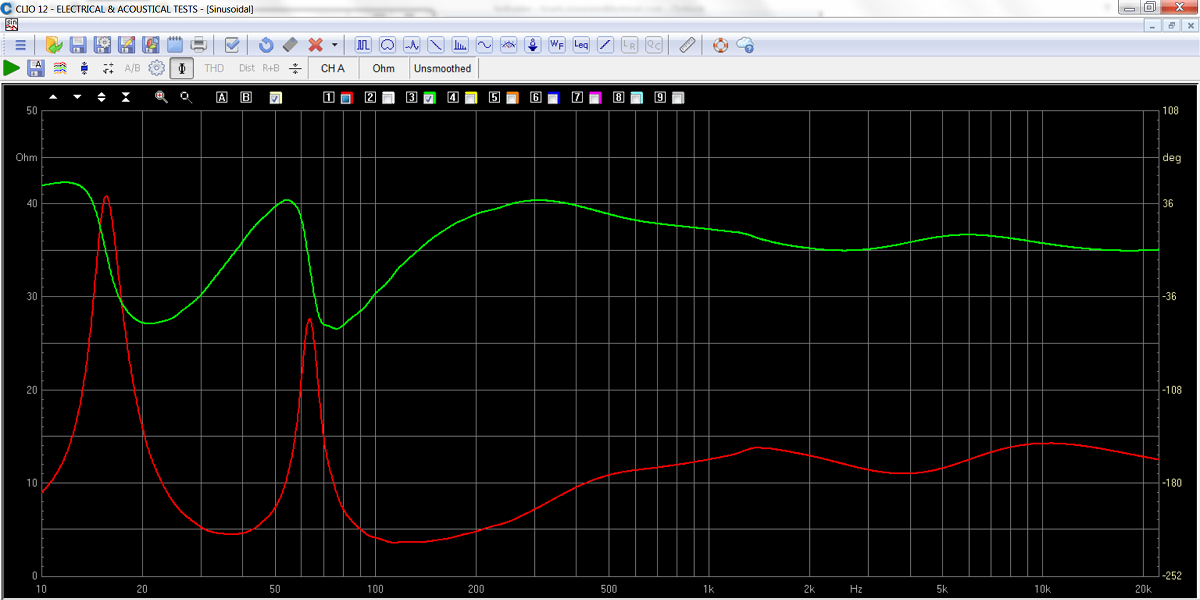
Final system impedance (red) and electrical phase (green).
Minimum impedance = 3.6 Ohms @ ~125 Hz.
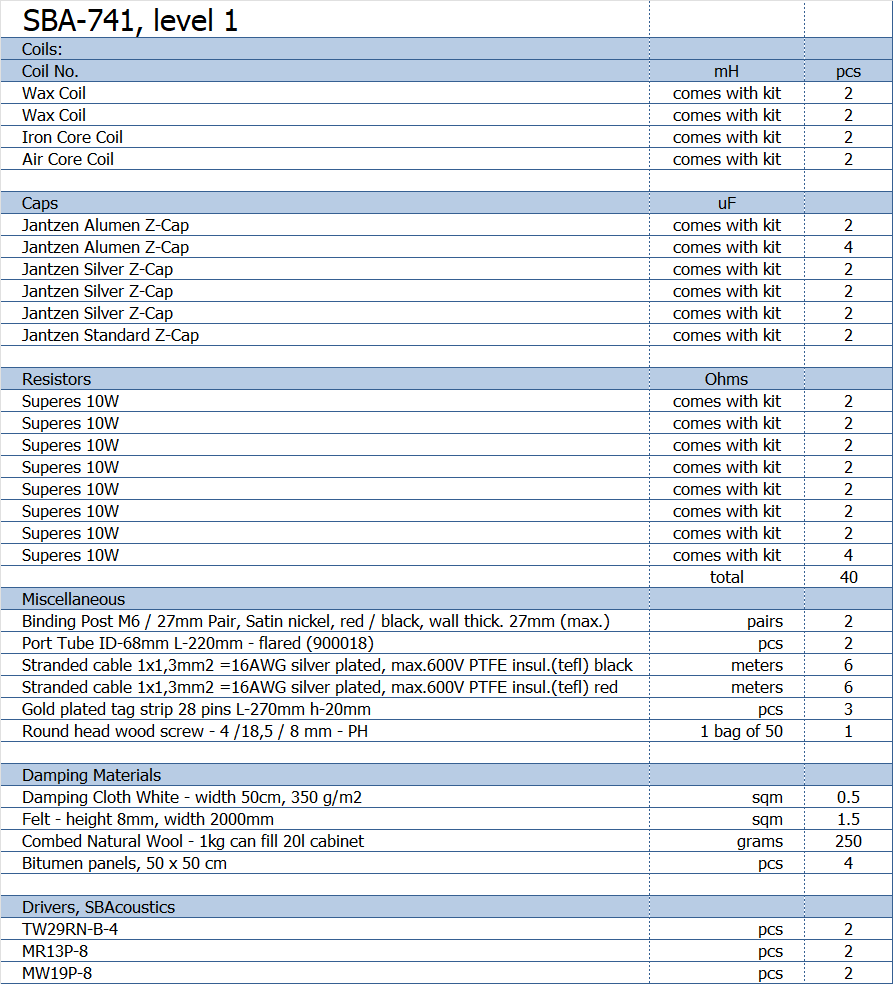
The bitumen pads are optional and
must be added to your order.
In level 2, the Alumen-Z caps for tweeter and midrange are replaced by
Silver-Z caps.
All kit and component prices may be subject to change and are always to be confirmed by Jantzen Audio Denmark.
Download Kit
Sale Presentations:
All technical questions to troels.gravesen@hotmail.com
All questions regarding purchase of kits, please mail Jantzen Audio at contact@jantzen-audio.com
CROSSOVER-LAYOUT
BACK TO INDEX
Check this out before start making crossovers:
http://www.troelsgravesen.dk/tips.htm#CONSTRUCTION_OF_CROSSOVERS
Please read here.
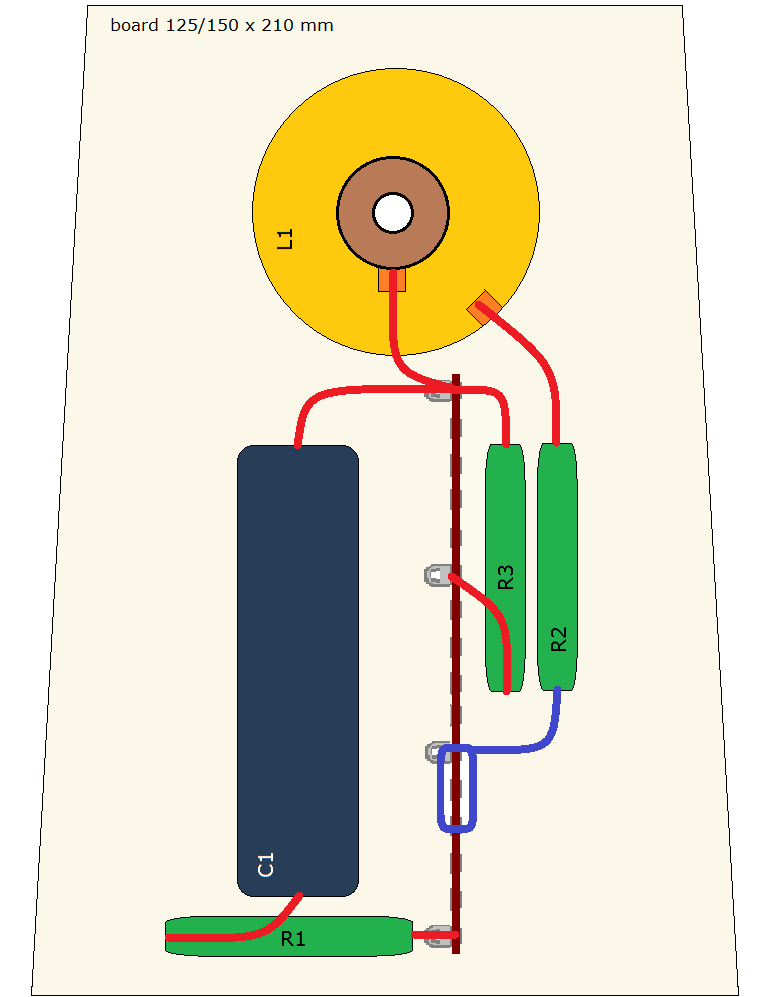
Tweeter section layout
To be placed on upper rear panel.
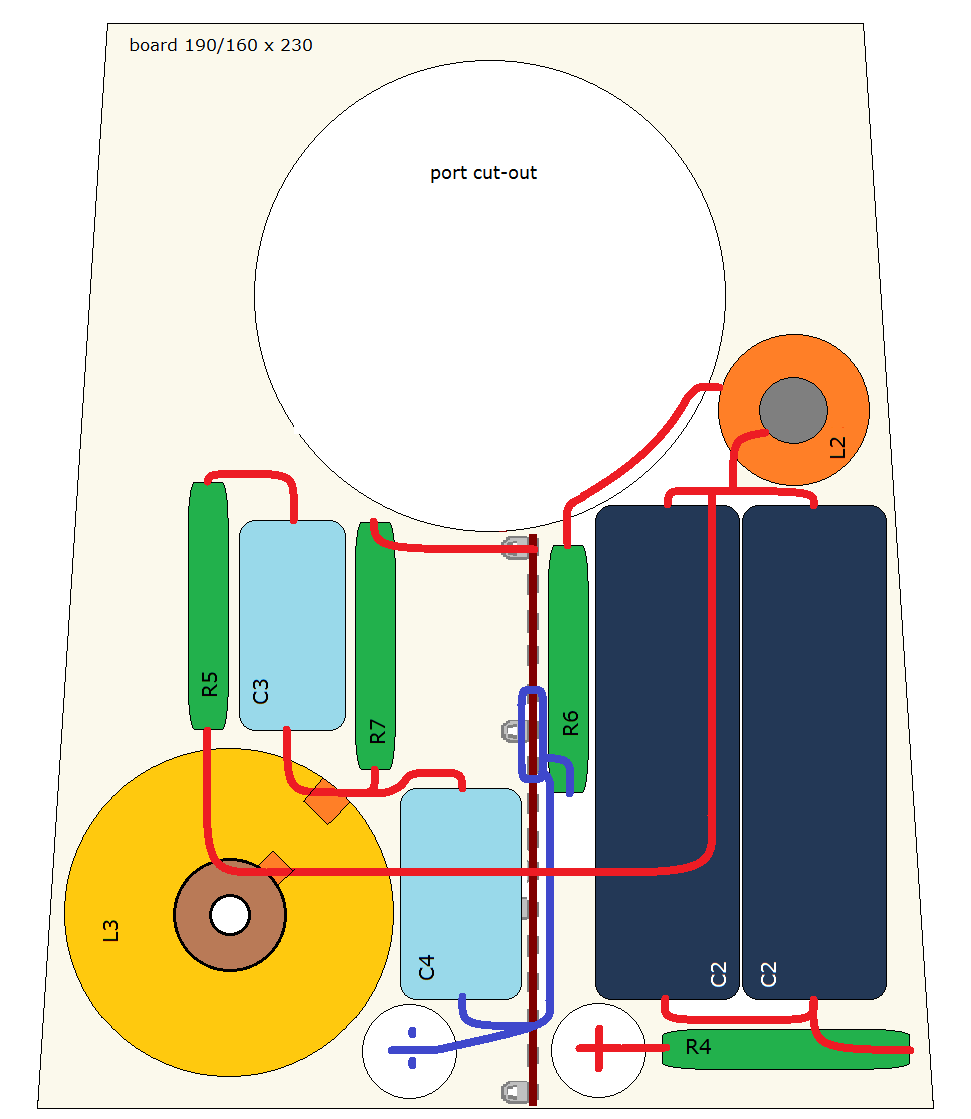
Layout midrange section
To be placed on lower rear panel. Make holes for port and terminals.
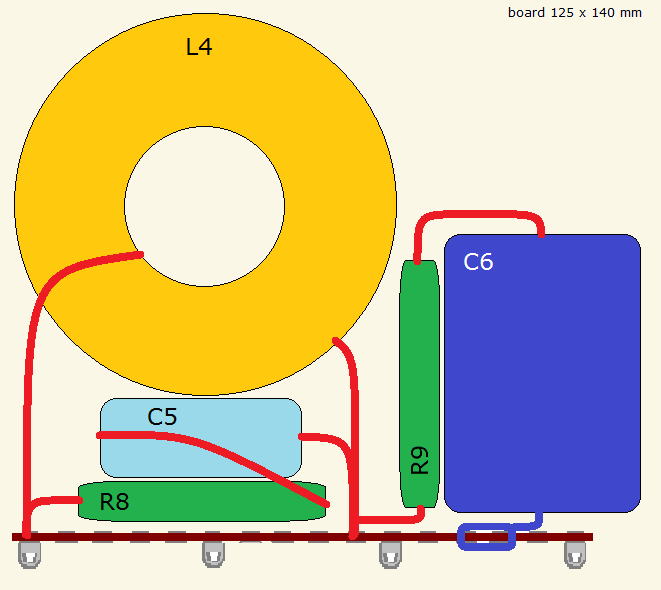
Layout bass section.
Place at bottom of cabinet.
Speaker wiring:

Crossover pics
Click some of the images to view large
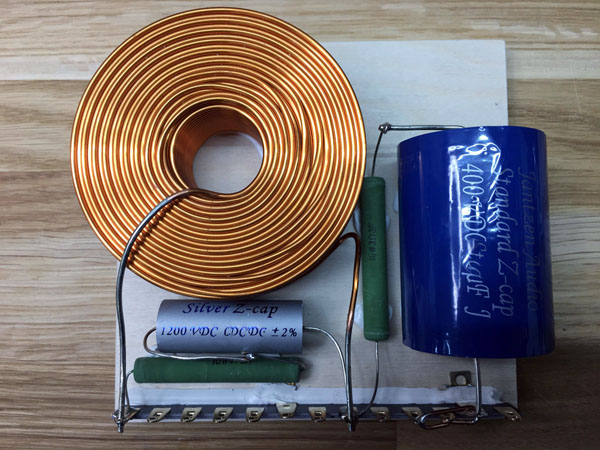
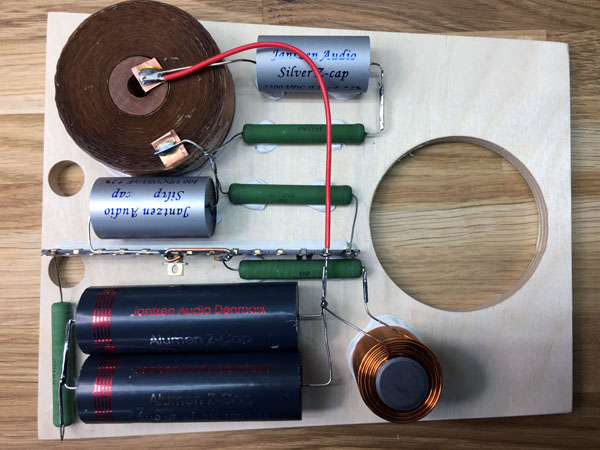
Left: Bass section. Right: Midrange section.
The Alumen-Z caps you'll be getting are bigger than those shown here,
due to now being in alu tubes. Performance is obviously the same.
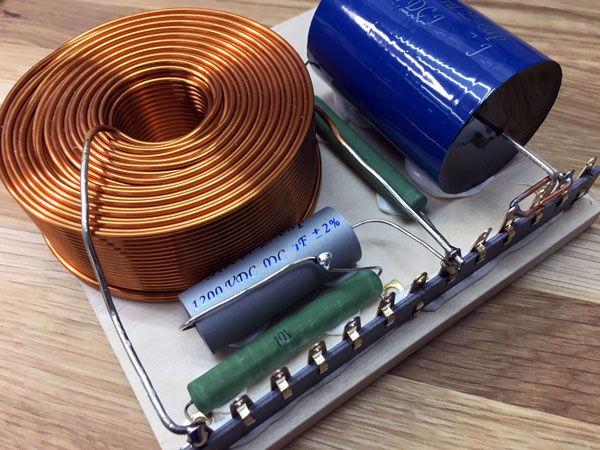
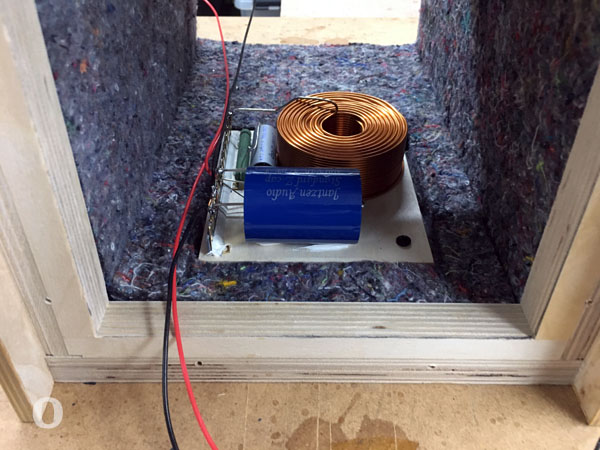
Bass section, close up and mounting on bottom panel.
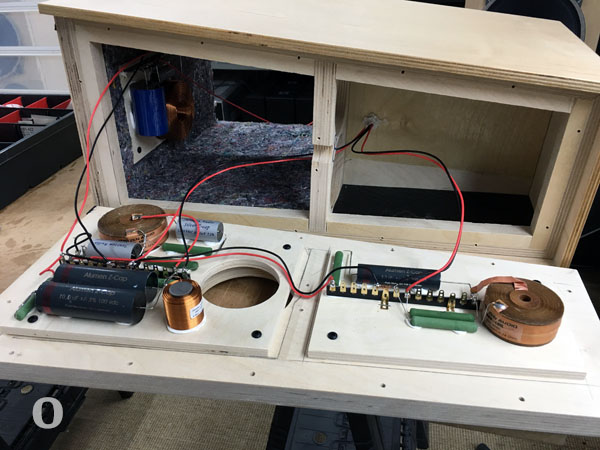
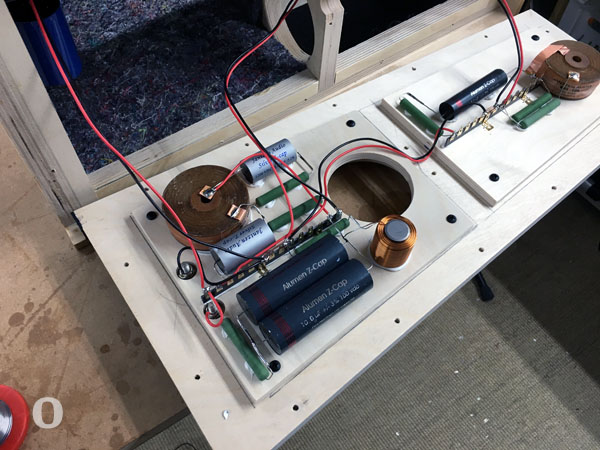
some images showing the mid and tweeter section on rear panel.
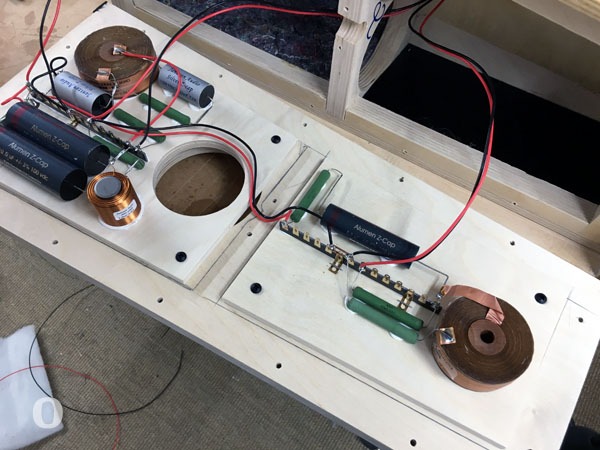
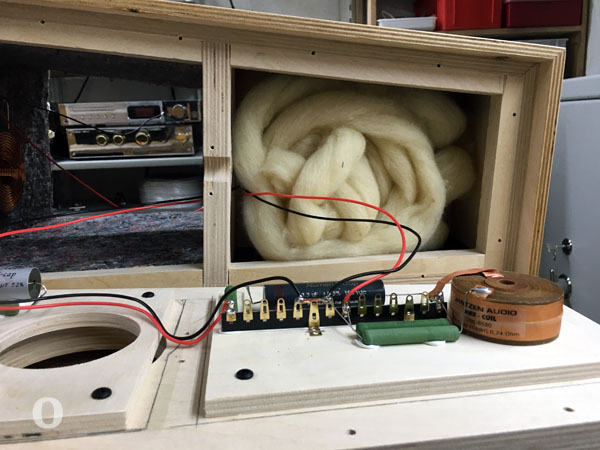
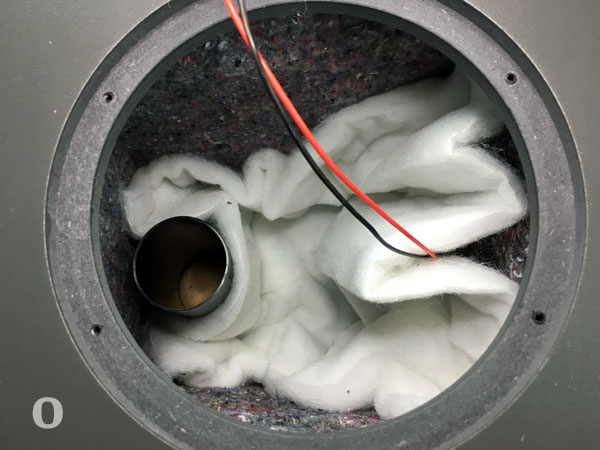
50 x 50 cm acoustilux covering bottom/crossovers.
BASS MODULE FOR SBA-741
CLICK IMAGE BELOW TO GO TO BASS MODULE PAGE
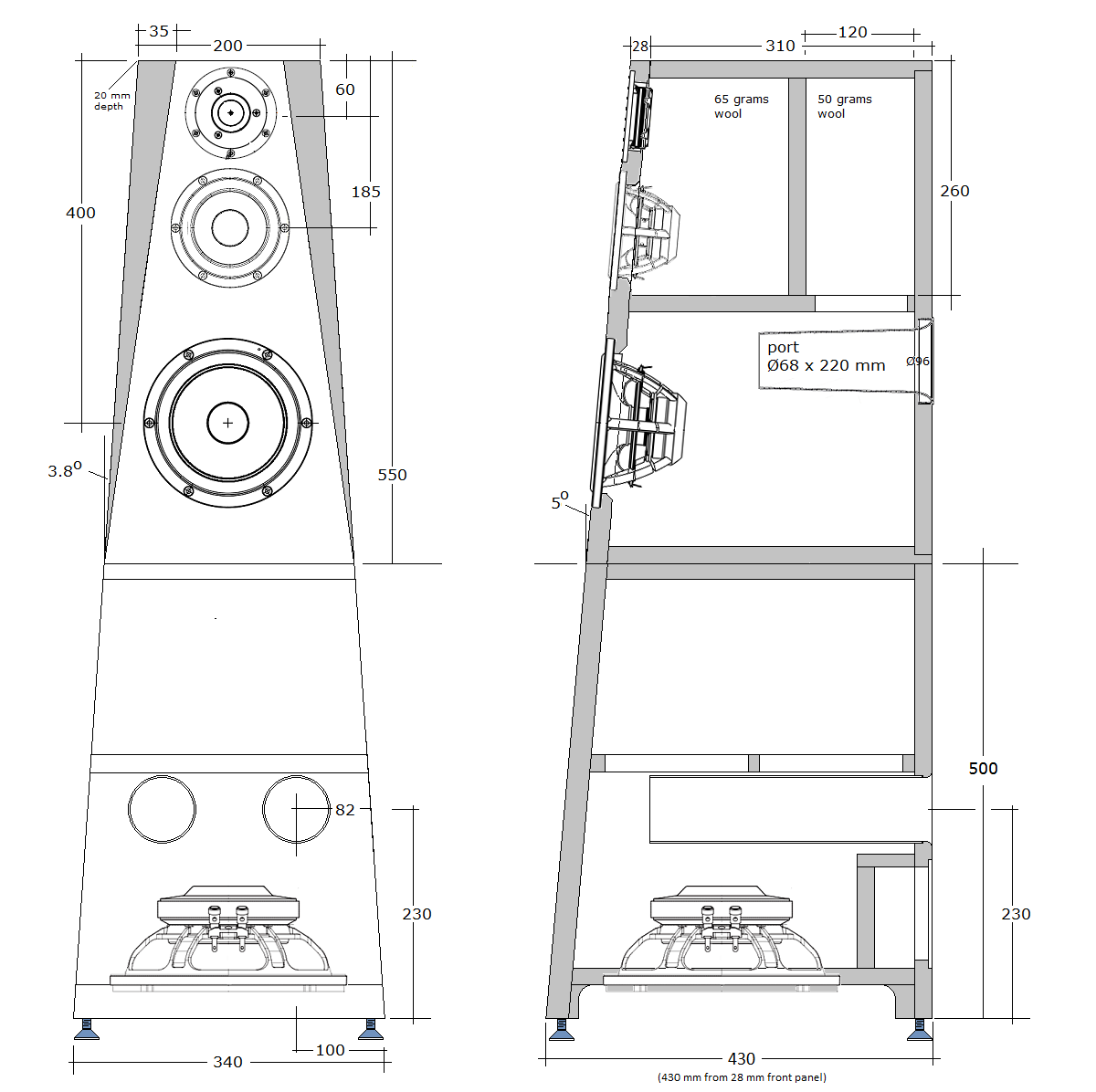
Should you consider the full Monty, you may build the cabinet in one. Certainly saves a lot of time I can tell!
